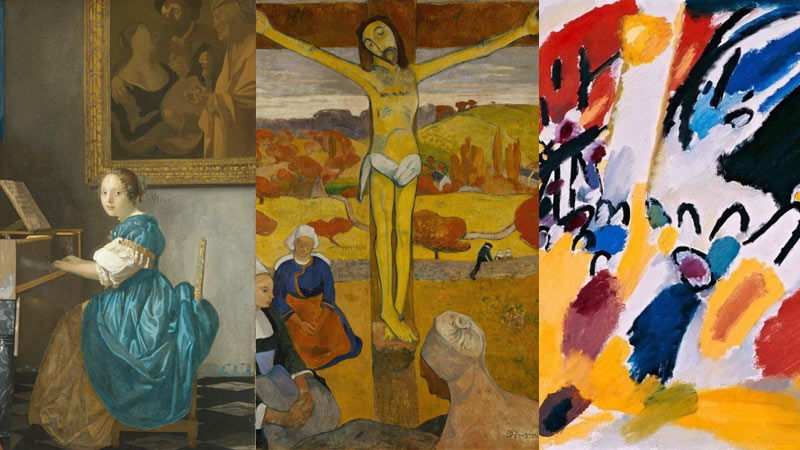
Yellow has long captivated artists, symbolizing warmth, joy, and energy. This hue has graced countless masterpieces throughout art history, often evoking a spectrum of emotions from happiness to anxiety.
Renowned artists like Vincent Van Gogh and Mark Rothko have harnessed the power of yellow to create works that resonate deeply with viewers.
In exploring the world of yellow paintings, one uncovers a treasure trove of creativity and emotion. From Van Gogh’s sunflowers that radiate life to Matisse’s joyful compositions, each piece tells a unique story through its brilliant use of color.
Join in as we delve into ten iconic paintings that showcase the beauty and versatility of yellow, revealing how this color continues to inspire and transform the art landscape.
1. Sunflowers – Vincent van Gogh
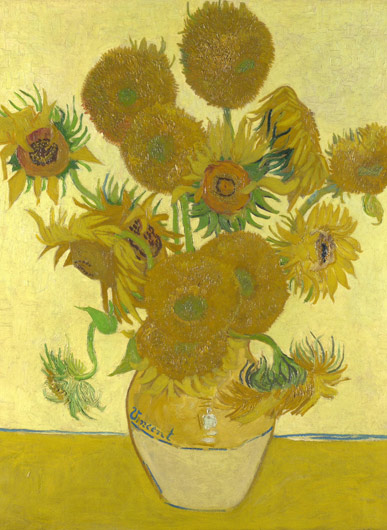
Vincent van Gogh’s “Sunflowers” series celebrates the hues of yellow through 11 stunning paintings. He employed thick paint and varying shades, capturing the sunflowers’ beauty and vitality.
This collection, painted during his Yellow Period (1886-1890), reflects his fascination with the natural world and emotional depth.
Van Gogh believed yellow symbolized gratitude and warmth, infusing each piece with life and energy that resonates with viewers even today.
2. The Kiss – Gustav Klimt
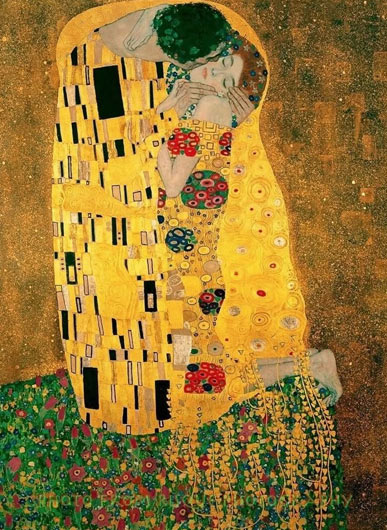
Gustav Klimt’s “The Kiss” (1908-1909) is a masterpiece that embodies the richness of his Gold Period. This painting showcases two lovers, enveloped in shimmering gold leaf and intricate patterns.
The use of gold not only enhances their embrace but also symbolizes divine love and intimacy. Inspired by Byzantine mosaics during his 1903 trip to Italy, Klimt elevated the moment of affection to a celestial plane while celebrating the allure of passion through vivid color and texture.
3. New York City 1 – Piet Mondrian
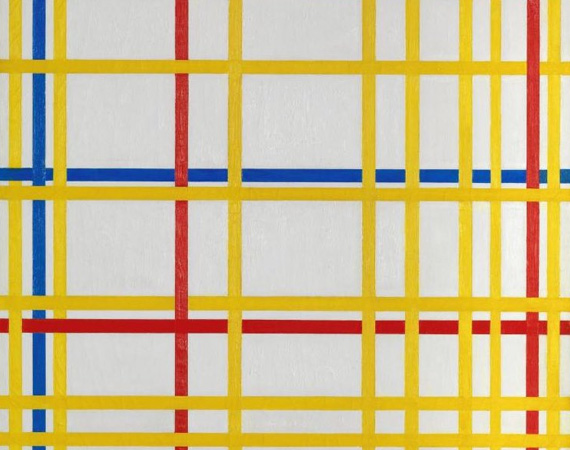
Mondrian’s “New York City 1” captures the energy of the city through a dynamic grid of black lines and primary colors.
He employs yellow, red, and blue to evoke movement and rhythm, reflecting the bustling spirit of urban life. His focus on geometric shapes embodies a quest for universal harmony, simplifying compositions to create balance and order that transcends cultural boundaries.
This painting showcases how bold colors can convey emotion and energy, uniting art and the essence of city living.
4. Cold Morning on the Range – Frederic Remington

Frederic Remington’s “Cold Morning on the Range” (1904) stands out as a portrayal of the American frontier.
It features a man riding an unruly brown horse against a backdrop of expansive yellow plains, emphasizing the desolation of the land.
The artwork captures themes of independence and mastery over nature, with yellow symbolizing the harshness of the environment.
In the distance, mountains hint at the Goodnight-Loving Trail, enriching the painting’s narrative depth. Remington’s use of color and form effectively reflects the spirit of this rugged era.
5. Mound of Butter – Antoine Vollon

“Mound of Butter,” created by Antoine Vollon between 1875 and 1885, exemplifies the artist’s mastery of still life.
This 69 by 102 cm painting features a heap of butter rich in deep yellow tones, symbolizing the carotene found in fresh grazing plants.
Displayed in the National Gallery of Art, it captures the essence of life during Vollon’s time, reflecting the artisanal process of butter production.
The still life serves as a stunning artistic expression of realism, showcasing Vollon’s ability to evoke texture and warmth through color.
6. The Yellow House – Vincent van Gogh

Vincent van Gogh painted “The Yellow House” in 1888 to capture his home in Arles, France. He devoted his canvas to shades of yellow, symbolizing warmth and optimism.
The painting reflects his time spent with Paul Gauguin, highlighting the discussions they had about art and color.
Van Gogh’s affection for yellow shines through, beautifully portraying the joy of domestic life and artistic camaraderie during his celebrated Yellow Period.
7. Impression III (Concert) – Wassily Kandinsky
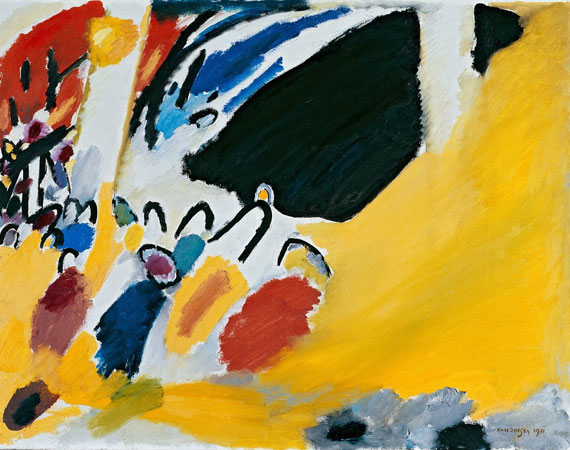
Kandinsky’s “Impression III (Concert)” showcases colors, predominantly yellow, to evoke movement and energy.
It features dynamic forms and thin black lines that provide structure. Kandinsky believed his art could evoke emotional responses akin to music, reflecting his concept of inner necessity.
The bright hues symbolize universal human experiences, making this piece a celebration of the expressive power of color and form.
8. The Yellow Cow – Franz Marc

Franz Marc’s “The Yellow Cow” exemplifies his style through a bold depiction of a cow in striking shades of yellow, orange, and red.
The painting’s blue-green background enhances its energy and vitality. Marc sought to illustrate the spiritual qualities of animals, particularly highlighting their connection to nature amidst industrialization.
This artwork embodies his belief in balancing humanity’s primal instincts and emotional depth, making it a significant piece in Expressionist art history.
9. The Yellow Christ – Paul Gauguin
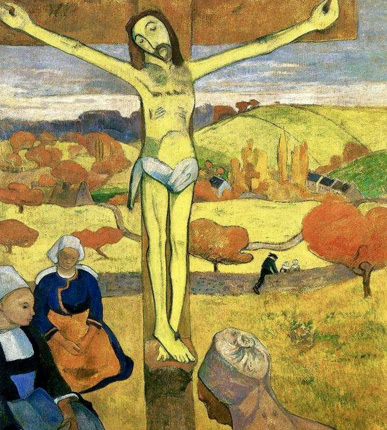
Paul Gauguin’s The Yellow Christ painted in 1889, showcases a striking use of yellow, presenting Christ against a dark cross with Breton women in deep, contrasting colors.
Gauguin’s choice of yellow reflects his emotions regarding the isolated life and devotion of the peasants. The autumn landscape enhances the narrative, while the figures exhibit bold outlines typical of Cloisonnism.
This painting, rooted in local culture, offers a personal interpretation of faith and spirituality, making it a significant Symbolist work.
10. Young Woman Seated at a Virginal – Johannes Vermeer

Vermeer’s “Young Woman Seated at a Virginal” beautifully captures a moment characterized by its brilliant use of yellow.
The subject, adorned in an eyecatching yellow cloak, exudes warmth and elegance. This painting, believed to be from circa 1670, highlights Vermeer’s mastery in depicting light, creating a sense of intimacy and depth.
The harmonious interplay of color and form invites viewers into the elegant world of 17th-century Dutch interiors.






